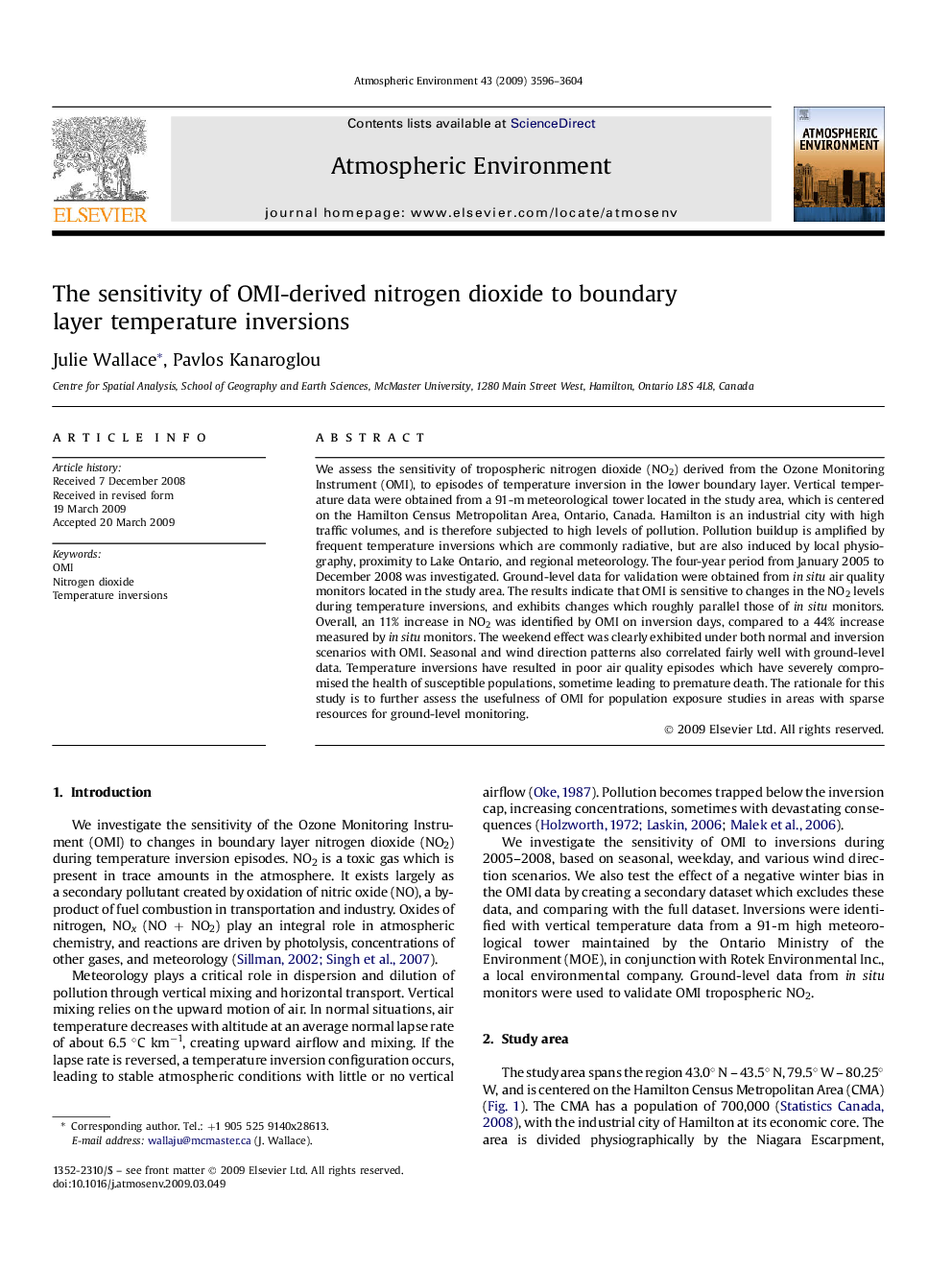| Article ID | Journal | Published Year | Pages | File Type |
|---|---|---|---|---|
| 4440901 | Atmospheric Environment | 2009 | 9 Pages |
We assess the sensitivity of tropospheric nitrogen dioxide (NO2) derived from the Ozone Monitoring Instrument (OMI), to episodes of temperature inversion in the lower boundary layer. Vertical temperature data were obtained from a 91-m meteorological tower located in the study area, which is centered on the Hamilton Census Metropolitan Area, Ontario, Canada. Hamilton is an industrial city with high traffic volumes, and is therefore subjected to high levels of pollution. Pollution buildup is amplified by frequent temperature inversions which are commonly radiative, but are also induced by local physiography, proximity to Lake Ontario, and regional meteorology. The four-year period from January 2005 to December 2008 was investigated. Ground-level data for validation were obtained from in situ air quality monitors located in the study area. The results indicate that OMI is sensitive to changes in the NO2 levels during temperature inversions, and exhibits changes which roughly parallel those of in situ monitors. Overall, an 11% increase in NO2 was identified by OMI on inversion days, compared to a 44% increase measured by in situ monitors. The weekend effect was clearly exhibited under both normal and inversion scenarios with OMI. Seasonal and wind direction patterns also correlated fairly well with ground-level data. Temperature inversions have resulted in poor air quality episodes which have severely compromised the health of susceptible populations, sometime leading to premature death. The rationale for this study is to further assess the usefulness of OMI for population exposure studies in areas with sparse resources for ground-level monitoring.
